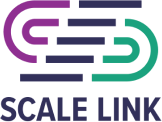Case study: How Minnesota Bank & Trust supports LMI entrepreneurs through an innovative partnership
Minnesota Bank & Trust sought to assist WomenVenture, a trusted community partner, and help Scale Link increase the flow of capital to LMI entrepreneurs and business owners.
The scenario
Angel Rogers. Angel's Learning Center. Photo courtesy of WomenVenture.
How Scale Link helped
For Minnesota Bank & Trust, community service is the at the heart of community banking. This commitment to provide impact through community relationships laid the groundwork for a collaboration between Minnesota Bank & Trust and Scale Link. Scale Link plays a unique role with CDFIs and banks by marrying a national presence with local impact. In this case, Scale Link introduced a community and mission driven lender at the local scale, WomenVenture, to Minnesota Bank & Trust because of Scale Link’s work in other markets. The team behind Scale Link had recently worked with Bank of Blue Valley in Kansas City, a fellow member bank of the Heartland Financial Network. This connection helped establish a relationship quickly and gave Minnesota Bank and Trust confidence in Scale Link’s recommendation of WomenVenture. The connection also expedited legal review and onboarding . On the other side of the transaction, WomenVenture’s previous knowledge of Scale Link’s expertise and work in other parts of the country helped leadership feel confident that Scale Link would be a long-term partner who valued their local impact. It can be difficult for nonprofit CDFI partners to devote time and energy to new types of transactions, especially when loan sales is not a core business practice, but Scale Link made it simple, with infrastructure and systems to efficiently sell to bank partners. This system allowed Minnesota Bank & Trust to support Women Venture through the purchase of 20 small business loans and a $45,000 donation.
Scale Link’s process
1
After connecting with Minnesota Bank & Trust and learning about their CRA goals, Scale Link identified available loans in their footprint and credit box to determine if a transaction would be possible.
Note: Loans in the Minnesota Bank & Trust transaction came from WomenVenture.
2
Scale Link provided legal documents to Minnesota Bank & Trust for review.
Note: Scale Link has a standard nonrecourse master participation agreement with each CDFI that governs the initial participation transaction. CDFIs retain servicing and collections responsibility. Scale Link allows banks to purchase the loans through transfer of its interest to the bank.
3
Minnesota Bank & Trust and Scale Link reviewed the available loans using a loan tape with key risk variables as well as a third-party risk rating from PayNet. Scale Link also provided a recommended transaction to help guide the process. After loans were narrowed, key documents for each loan were provided to review.
Note: Banks widen their credit box when working with Scale Link as CDFIs as a rule lend to businesses outside a bank’s typical reach. Scale Link encourages banks to size their credit box in light of the total capital at risk as opposed to the individual risk of each transaction.
4
Scale Link confirmed the final portfolio and price, then prepared all documents and set a closing date.
5
Scale Link sent formal acknowledgement letters with CRA qualification information for both the loan purchase and grant request to use in the bank’s CRA evaluation.
6
Scale Link provides monthly transaction reports and a single wire of all payments.
Results
$229,417
in microloans purchased
$45,000
grant capital to Scale Link
$11,470
average loan size
$1M or less
gross annual revenue for all loans.
All loans were in LMI census tracts.
20
small businesses supported
9%
average interest rate
Michealene Colestock, Spence Specialties. Photo courtesy of WomenVenture.
CRA details
By taking on the risk of loan loss and providing capital, Minnesota Bank & Trust makes a direct and consequential impact. The purchase of small business loan participations is unequivocally considered part of a banks CRA lending in the interagency Q&A.[1] The location of these loans within the bank’s assessment area provides positive consideration, regardless of if they were directly originated by the bank or purchased. The interagency CRA Rule indicates that a bank’s lending performance considers both originations and purchases of loans.[2] Donations provided meet the definition of qualified investment in the interagency CRA rules and promote economic development in Minnesota Bank & Trust’s assessment area, which in turn provides positive CRA consideration.
[1] CRA Guidance ___.22(a)(2)-6
[2] 12 CFR 25.22(a)




